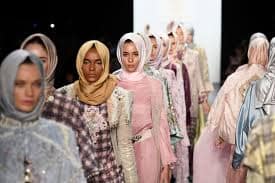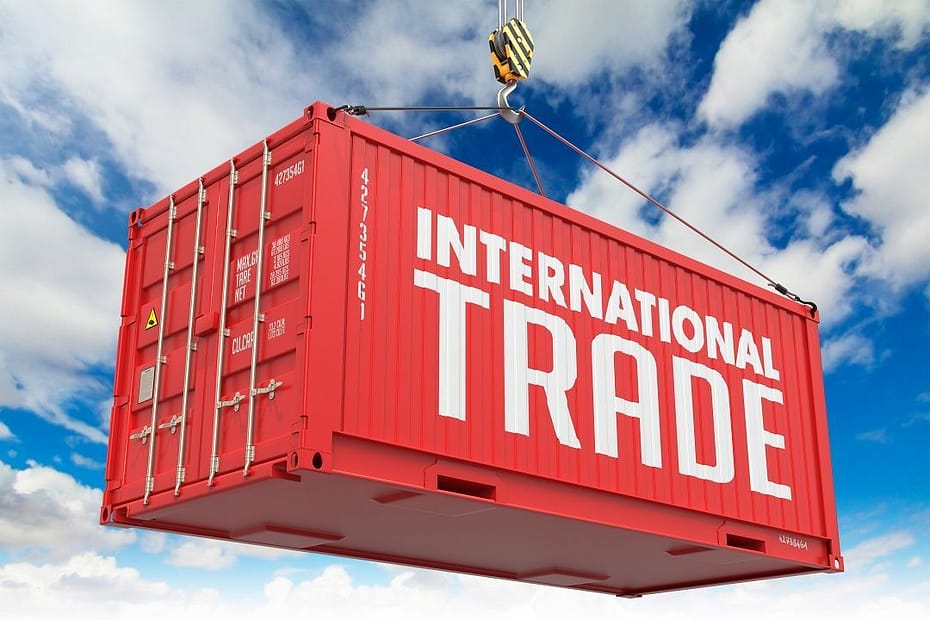Table of Contents
Most individuals may not realize that the modest clothing sector is a rapidly evolving market influenced by cultural, economic, and social factors. The global halal fashion market size was estimated at USD 407.3 billion in 2023 and is projected to reach USD 571.4 billion by 2030, growing at a CAGR of 5.0% from 2024 to 2030. You can explore how international trade dynamics, consumer demand, and regional regulations shape the availability and diversity of modest apparel worldwide. Through examining various case studies and market trends, they will gain insights into the complexities of trade dynamics that affect producers and consumers alike in the modest fashion landscape.
The Global Supply Chain: Navigating Modest Clothing Production

The intricate worldwide supply chain that includes many parties, from fabric producers to retailers, is essential to the modest clothes industry’s success. Every link in this chain needs to adjust to changing cultural tastes, legal requirements, and customer expectations. Clear communication channels and effective logistics are essential as more brands appear to serve a wider range of consumers. In addition to enjoying the advantages of well-established supply chains, this industry also faces particular difficulties related to moral production and cultural sensitivity in their distribution strategy.
- Key Exporting and Importing Countries
Turkey, Indonesia, and Pakistan rank among the top exporting nations in the modest clothing market, providing a variety of styles and materials to satisfy global demand. Countries like the United States and Germany serve as pivotal importers, where consumers increasingly seek fashion that aligns with their values and identities. Additionally, emerging markets in Africa and Central Asia are beginning to carve out a niche, offering distinctive designs that reflect local cultures, which further diversifies the landscape of modest apparel trade.
- The Role of Sustainable Sourcing in Supply Chain Dynamics
Sustainable sourcing plays a significant role in the modest clothing supply chain, influencing both production methods and consumer preferences. More companies are focusing on ethically sourced materials to meet the growing demand for environmentally friendly products. Fair labor practices and sustainable materials not only improve brand reputation but also enhance consumer loyalty. As a result, businesses are increasingly interested in transparency throughout the supply chain, opting to use certifications and traceability tools to demonstrate their commitment to sustainability.
Modest clothing manufacturers that put an emphasis on environmentally friendly procedures stand out in the market as a result of the global shift towards sustainability. Businesses like Modanisa and Aab, for instance, have demonstrated their commitment to environmental responsibility by embracing recycled textiles and organic cotton. Customers who are growing more thoughtful about their purchases respond favorably to such campaigns. In addition to increasing brand value, this trend inspires other businesses in the industry to do the same, creating a community around sustainable fashion.
Market Trends: The Rise of Modest Fashion Consumers

The modest fashion market is experiencing marked growth as consumers seek alternatives to mainstream fashion. This demographic, driven by diverse cultural backgrounds and a desire for stylish yet modest attire, emphasizes quality, sustainability, and ethical production practices. Brands that cater to these values are gaining popularity, solidifying the presence of modest fashion in global markets and attracting an audience eager to express personal style while adhering to modesty principles.
- Demographic Shifts and Their Impact on Demand
Significant demographic shifts are reshaping the modest fashion landscape, notably the increase in Muslim populations worldwide. This diverse consumer base demands fashionable options that respect religious values, leading to an increase in the variety and availability of modest styles. In regions such as North America and Europe, younger consumers are also embracing modest fashion for its versatility and inclusivity, further driving demand.
- Cultural Influences Driving Modest Clothing Trends
Cultural influences are pivotal in fostering a positive perception of modest fashion. They stem from an increased visibility of various communities that espouse modesty as part of their identity, whether religious or through personal philosophy. Social media platforms showcase influencers, such as Hijab fashion bloggers, who highlight fashionable yet modest choices, illustrating to a broader audience that elegance and modesty can coexist in contemporary style.
The rise of cultural influences is exemplified by the impact of celebrities and influencers who openly advocate for modest fashion. Figures like Amina Muaddi and Dina Tokio have propelled modest styles into the mainstream, reshaping perceptions of what fashionable modesty entails. Campaigns promoting inclusivity and diversity have also encouraged apparel brands to explore innovative designs that integrate modesty without compromising on current trends. As these cultural movements flourish, they contribute to a growing acceptance and demand for modest clothing.
Trade Policies: Analyzing Tariffs and Regulations
Based on research, trade policies significantly shape the landscape of the modest clothing sector, influencing prices, availability, and market entry. Tariffs on textiles and garments often determine competitiveness, affecting both local and international producers. Regulations regarding labeling, safety standards, and import duties further complicate the landscape. Compliance with these policies is crucial for international brands seeking to penetrate new markets, as failure to navigate these complexities can lead to substantial financial penalties and loss of market share.
- Impact of Trade Agreements on Modest Clothing Imports
Trade agreements play a pivotal role in the modest clothing sector, reducing tariffs and easing import restrictions. For instance, agreements like the Comprehensive and Progressive Agreement for Trans-Pacific Partnership (CPTPP) facilitate greater market access, benefiting exporters while promoting competitive pricing. Such arrangements have allowed modest fashion brands to expand their reach, capitalizing on lower costs and reduced barriers to entry in countries participating in these trade agreements.
- Regional Policy Variations Affecting Market Access
Regional policy variations can significantly affect market access for modest clothing brands. Countries within the European Union, for example, uphold standardized regulations that simplify cross-border trade. In contrast, non-EU nations often impose complex local rules, leading to barriers that can hinder market entry. This disparity results in varied experiences for modest clothing brands looking to export, with some regions presenting a smoother pathway towards market access than others.
For instance, the regulatory framework in Southeast Asia differs greatly from that of North America, with varying import duties and safety standards. Malaysia’s trade policies, emphasizing import quotas on textiles, may restrict market access for foreign brands, impeding growth. Conversely, nations like Indonesia have implemented initiatives encouraging modest fashion, thus offering attractive environments for investment. Understanding these regional policy variations is imperative for brands aiming to navigate the international landscape effectively, as they dictate the feasibility of sustainable market entry strategies.
Ethical Considerations: Fair Trade and Labor Practices
The modest clothing sector grapples with ethical considerations surrounding fair trade and labor practices, as consumers increasingly expect brands to uphold social responsibility. Ethical production involves ensuring that workers receive fair wages, work in safe conditions, and are treated with dignity. Brands that prioritize these values not only enhance their reputation but contribute positively to the communities they impact. Despite the growing demand for ethically produced goods, actual implementation remains inconsistent across the industry.
- Consumer Awareness and Its Effect on Market Practices
Rising consumer awareness regarding ethical issues in fashion significantly influences market practices. As consumers become more educated about labor conditions and environmental impacts, they increasingly favor brands that demonstrate ethical responsibility. This shift forces companies to adopt fair trade principles or risk losing market share, leading to a gradual transformation in the industry.
This trend is reinforced by notable consumer-centric initiatives, such as the Fashion Revolution movement, which encourages individuals to ask brands, “Who made my clothes?” By actively seeking information on labor practices and sustainable sourcing, consumers are beginning to drive demand for transparency and accountability. As a result, many brands are responding by highlighting their ethical practices in marketing campaigns or adopting certifications like Fair Trade or GOTS, showcasing their commitment to social and environmental justice. This dynamic not only shapes consumer purchasing behavior but also paves the way for a more sustainable and equitable fashion industry.
The Future Landscape: Predictions and Emerging Markets
As the global demand for modest clothing continues to rise, emerging markets are poised to significantly influence the sector’s future. Analysts predict that countries in Southeast Asia and Africa will become central players, thanks to their growing middle classes and increased awareness of modest fashion trends. While traditional markets will still hold weight, the shift in consumer preferences provides a fertile ground for innovative designs that resonate with cultural values and lifestyles, ultimately reshaping the modest clothing narrative.
- Technological Advancements in Modest Clothing Production
Innovative manufacturing technologies are set to revolutionize the modest clothing sector, enabling faster production cycles and more sustainable practices. Cutting-edge techniques such as 3D printing and automated sewing processes can meet the demand for diverse designs while minimizing textile waste. This not only enhances efficiency but could also lower costs, making modest fashion more accessible to a broader audience.
- Potential Growth Areas in Developing Regions
Developing regions, particularly in Southeast Asia and Africa, represent untapped markets for modest clothing brands. As urbanization accelerates and disposable incomes rise, consumers in these areas are increasingly seeking stylish, culturally relevant options. Brands that can adapt their offerings to meet local tastes and promote ethical production methods are likely to thrive in these growing markets.
In Southeast Asia, for instance, nations like Indonesia and Malaysia are witnessing a burgeoning interest in modest fashion driven by a young, dynamic demographic. In Africa, nations such as Nigeria and Kenya are embracing modest styles influenced by both tradition and contemporary trends. As e-commerce platforms expand in these regions, they provide modest clothing brands with opportunities to engage with consumers directly, tailoring products to meet local needs and preferences.
Summing up
With these considerations, Highlight that the international trade dynamics in the modest clothing sector are rapidly evolving, influenced by cultural shifts, consumer demand, and global supply chain challenges. They must navigate complex regulations and diverse market preferences to succeed. Emphasize the importance of sustainable practices and adaptability in this competitive landscape. As the modest fashion market continues to expand, stakeholders have the opportunity to engage with a broader audience while promoting ethical and inclusive fashion practices across borders.
